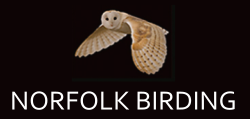ANDALUCIA AMAZING MIGRANTS TOUR REPORT 2nd – 9th SEPTEMBER 2019
Participants:- Shenagh Gilleard, Tony & Wendy Parnell, Adrian Roach, Sue & Keith Waldron & James Walsh
Tour Guide for Norfolk Birding – Chris Mills
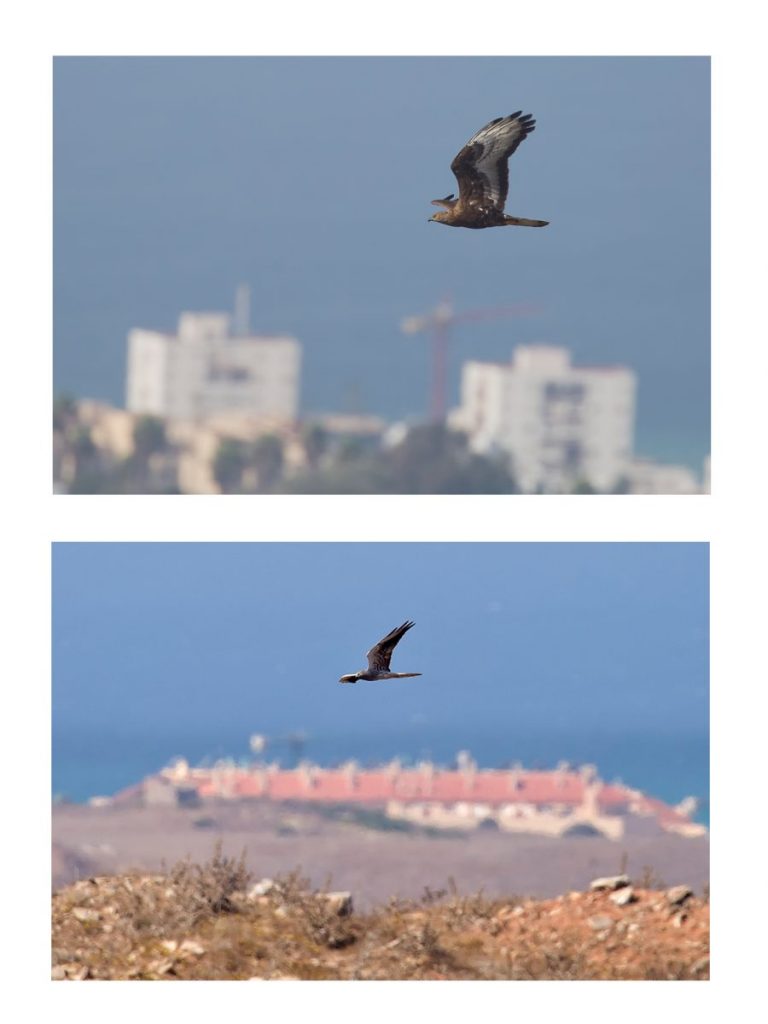
the towns buildings in the backdrop as these birds head across 14km of sea to Africa!
Accommodation – We returned again to the wonderful accommodation and hosts at Huerta Grande! Its geographical location is very close to the raptor watch-points. The migration overhead set in the beautiful woodland, with passerine migration outside the chalets are all great reasons for using this as our accommodation.
The accommodation consists of a lovely set of houses, rooms and timber lodges set in 7 hectares of a forest of Laurel and Cork Oak trees.
All rooms were en-suite or with separate private bathrooms plus each came with a small lounge area a kitchenette complete with a fridge, plus tea and coffee facilities. The rooms are clean and simple with modern comfort. There is a 20 metre pool where you can cool down and then look upwards and watch the migration above you!
The food was excellent, our hosts Katrin, Juan Carlos, Juan Julien, & Miguel the resident bird guide provided us with brilliant food, birds and drinks.
Also thanks to Simon Tonkin and Nicky for up to date local information as well.
Food – Each morning we were treated to cereal, muesli, juices, bread, toasts, jams, cheese, hams, tea & coffee! A real, filling & healthy breakfast! Plus early breakfasts were prepared for us on two mornings as well.
Packed lunches were generally, a selection of cheese, Iberian meats, egg, tomatoes in French sticks, crisps and lots of wonderful fruit plus cereal bars & juice.
Evening meals were taken at Huerta Grande on six evenings. They provided us with an excellent range of three course meal with a glass (or more!) of wine for 15 euros.
Trip Report – The following trip report is an overview of the locations and wildlife. An extensive bird systematic list is included at the end of the report.
If you are interested in joining the trip or visiting Andalucia, please feel free to drop me an email at chrismills@norfolkbirding.com. 2020 Andalucia Tour dates 29th August to 5th September.
Monday 2nd September 2019 – Day One – The group arrived from various flights locations this year, but we were all eventually sat at the beautiful surroundings of Huerta Grande for an impromptu Spanish lunch around 1pm. We were greeted during lunch by a nice small flock of 30 White Storks, circling overhead and several low Griffon Vultures, plus few Booted Eagles and a single Short-toed Eagle.
After lunch everyone got settled and unpacked into their rooms and we then headed off to Algarobbo for a light introduction of the overhead migration, that is the wonder of this area. There was a nice light passage of birds overhead, and was ideal for those in the group who were seeing many of the birds for their first time!
We headed to start off with towards the West area of the Straits of Gibraltar, the military road of Tarifa. Here there was nice views of many Black Kites over 100 close to the road and the track, on the top it was very windy, but we had our first views of numerous Spotless Starlings, a Sardinian Warbler, several Stonechats and a nice migrant flock of c40 Bee-eaters pass by overhead. We then headed back to Algarrobbo where we would have shade and a bit more shelter from the wind.
From here it was much calmer and over the next couple of hours, we had a nice mixture of birds, with over 25 Booted Eagles, a small group of 12 Honey Buzzard, 3-4 Short-toed Eagle, a Marsh Harrier, a high Peregrine, a single Montagu’s Harrier, several more flocks of Bee-eater, plus small parties of Swallows, whizz by and our first Pallid Swifts. A few Griffon Vultures were along the ridge and eventually we also picked several Egyptian Vultures.
I was conscious that everyone had set out in the early hours that morning and so we headed back late afternoon for pool and downtime. But pool side at Huerta Grande is never dull and we watched as Black Kites, Honey Buzzards and Booted Eagles passed overhead, whilst Firecrest, Crested Tits and Short-toed Treecreepers could be heard calling nearby!
We had the first of many lovely evening meals at Huerta Grande before heading off early to bed, ready for a full day on Tuesday.
Tuesday 3rd September 2019 – Day Two – We had a regular breakfast at 8am, it wasn’t properly light until 8.15 and we started birding around 8.45am, with the passerines just starting to become active. It was a slightly grey, overcast windy morning and we did well in less than ideal conditions! There was a nice group of Blackcap, but the first bird of note was an Iberian Chiff-chaff that was showing intermittently, and announcing its precise identification with it’s diagnostic “pwseee” call, almost Siskin like at times, we eventually got good views of several of these.
A Spotted Flycatcher darted in and out before eventually providing reasonable views, there was quite a few of these to be seen around the camp. We headed down the track and a calling Firecrest held our attention, there were a few “ooh’s and ahhs”, when it gave itself up and was joined by a second one, such stunning beautiful, tiny birds! As we headed further into the woodland a Hawfinch was calling. We walked quietly down and eventually one appeared and was joined by two more, we were fortunate as the 3 Hawfinch sat still for several minutes on some dead branches and we were able to get clean views of them! We continued our walk and a nice flock of tits passed us, and ‘pishing’ helped to pull them in for better views, a Garden Warbler was seen briefly but was always tricky sat back into the vegetation. A Short-toed Treecreeper was calling and we did eventually get views as it crawled the trunk side in typical fashion. Whilst watching this a Crested Tit was also calling, again it took a little while in the breezy conditions but we secured good views for everyone eventually.
We rounded off the camp birding in the board walk area, where there was a flock of Goldfinch, good views of Sardinian Warbler, several more Iberian Chiff-chaff, plus a single Serin was flying around calling.
It was now late morning and we headed off West towards Tarifa. As we approach the town there was clearly a lot of Black Kites, coming out of their roost area and circling, but going nowhere in the strong levanté wind. We stopped off to watch an amazing c350 circling Black Kite many at eye level and lots below us, a wonderful experience. There was also an Egyptian Vulture overhead from here.
We reached Playa de los Lances around lunch time and we set off with lunch for the pools and the boardwalk. The wind was strong and it was good to take lunch in the hide area. There was a nice mixture of birds from here, and first up we excellent scope views out on the beach of the sought after Auduoin’s Gulls and close by a group of roosting Yellow-legged Gulls. The coastal pools had a nice flock of shorebirds, c60 Sanderling, c20 Ringed Plover, amongst these were also several Kentish Plover, plus 3 Whimbrel, Dunlin, Bar-tailed Godwit and a Common Sandpiper. Also nearby Grey Heron, Little Egret and small flock of Cattle Egrets. As we ate our lunch here, it suddenly became apparent that there was also a steady passage of birds appearing overhead. The overhead migration intensified as birds presumably from the mountains of Bolonia that had drifted over the bay in the strong easterly wind appeared from the seaward skies overhead, it was now wave after wave of hundreds – c1000 Black kites, then c600 Honey Buzzards with tens of Booted and Short-toed Eagles, a lovely sense of the spectacular migration was well and truly underway.
Whist watching both above us and below us, the waders suddenly scattered, a mystery why, until a fine rufous juvenile Montagu’s Harrier swept past!
I decided against the boardwalk and looking for larks and wagtails as we would have been doing battle with the strong easterly wind, there was several Zitting Cisticola along the fence line as well as the ubiquitous Stonechats on the walk back.
A ride up into the mountains and into one for the valleys made sense, and so we headed towards Bolonia. After navigating the bumpy track, we arrive under the cliffs hosting a nice Griffon Vulture colony and we took a short walk to find shade and scan the ridge. We were soon getting lovely scope views of Griffon’s both overhead and perched on the rocks. We hadn’t been scanning for too long when I noted an obvious Eagle over the ridge, an adult Bonelli’s Eagle, not difficult to recognise and the scope confirmed it was in tandem with a younger second calendar year Bonelli’s Eagle. It was good scope views for several minutes as they interacted. These eventually melted away and we were left now to enjoy Crag Martins back forth along the skyline with occasional Alpine Swifts appearing in view. Suddenly James, got everyone’s attention as he announced he was sure he had a juvenile Ruppell’s Griffon Vulture, he did a really dark, classic juvenile with a single creamy tramline, plain upper wing coverts and clearly smaller than the accompanying Griffon’s! It came past circled and was and down for several minutes enabling pictures as well as excellent views.
It had been a very successful afternoon and we headed back to the accommodation with enough time for an hour by the pool before dinner. Poolside again offered up more raptors, and several Hawfinch plus Crested Tits!
Evening meal at Huerta Grande
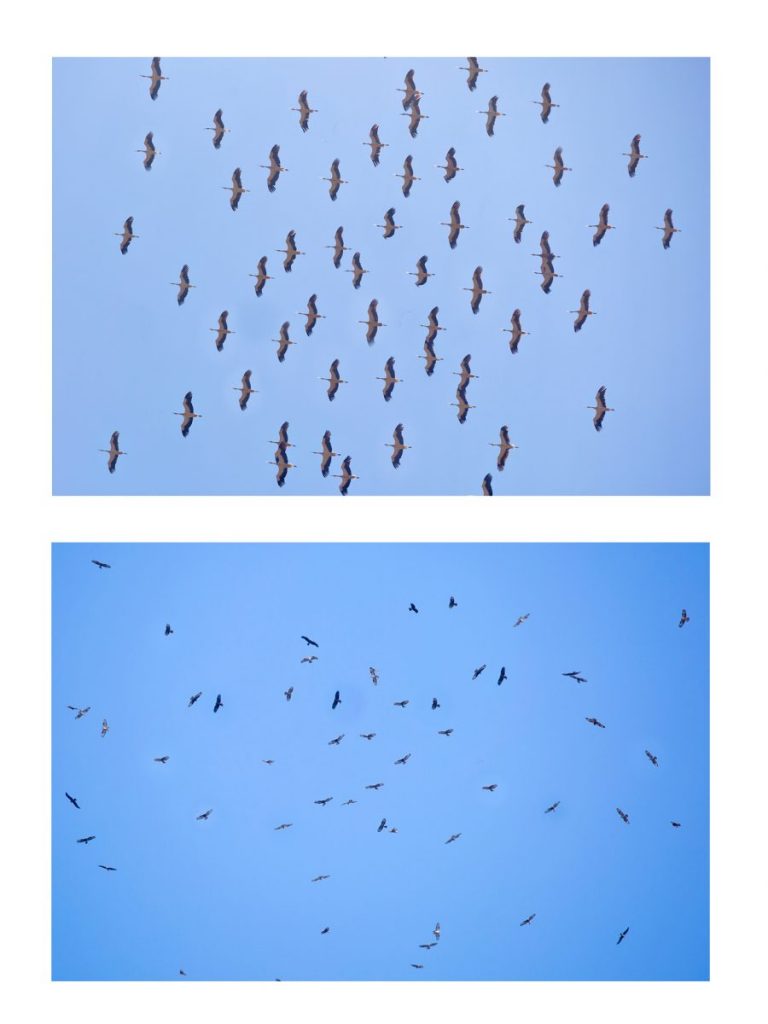
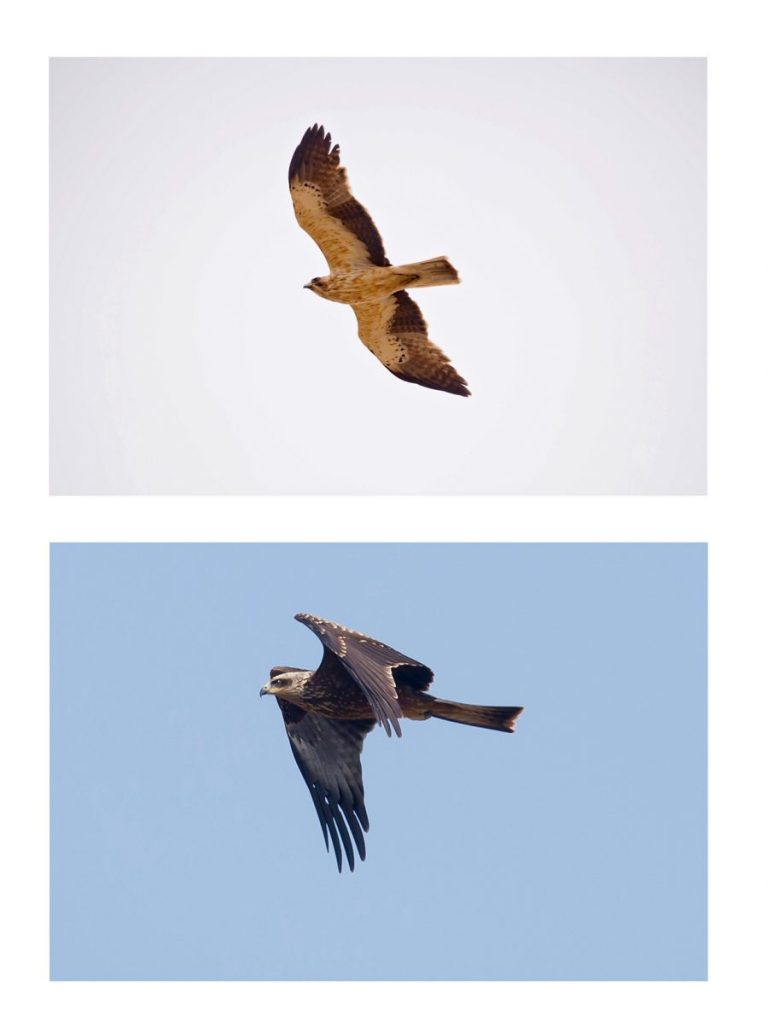
Wednesday 4th September 2019 – Day Three – We had a slightly earlier breakfast at 7.45am, to enable us to make the journey up into the mountains before the heat of the day arrived.
As we headed up the switch backs on the mountain road and neared our destination I caught glimpse of a passerine perched on top of a building, I had seen a target species here before! It was a good call as the bird was indeed a Black Wheatear, and there was at least 2 Black Wheatear, which proved reasonably showy. There was Crested Lark also but the first Dartford warblers of the day proved trickier to see well. After this brief stop it was a short drive to Sierra de la Nieves and the first man birding area.
We spent the next two hours with great success in the main parking area, exploring the trees, bushes and an nearby swing fed water trough. There was several Redstarts, Pied Flycatchers in this area for starters, but soon we were drooling over a superb male Black-eared Wheatear, a stunning mix of black, white and apricot! The next bird was a surprise, and took a little time to secure. We saw it briefly before it flew. It immediately looked to me like a large, black and white Sylvia warbler. We waited patiently, as it had typically disappeared into the thick of a bush for several minutes, but suddenly it appeared out into full view, the scope revealed a superb big warbler complete with black hood and pale iris, a Western Orphean Warbler, a species I had only encountered once before here in September.
As we walked through the shrubs, there were 1-2 more Redstarts, plus a Black Redstart and several Sardinian Warbler. We headed for the shade and sat down to watch the drinking trough area. Sat quietly it was a joy to watch the birds appear into view, numerous Iberian Chiff-chaffs, lovely bright yellow and green birds, a Spotted Flycatcher, a brief Pied Flycatcher, then a striking Western Bonelli’s Warbler, with it’s gleaming white underparts, bright green remiges and open faced appearance. Chaffinch’s, Blue Tits and Great Tits all joined in and everything scattered when a Jay appeared, the slightly darker Iberian form, compared to the UK.
We now walked back towards the minibus in making a circular route of the area, and next an Iberian Grey Shrike appeared on top of the bushes, it sat in view allowing scope views and see photography. We continued and then a Hoopoe appeared in flight, before landing and eventually with patience it walked out to also provide good scope views. It was warming up now and the first of the days raptors were 4 Honey Buzzards, undoubtedly migrants heading south.
We now drove through the forest heading for an other open area, we stopped briefly for a Tit flock, and ‘pishing’ revealed there was both Crested and Coal Tit alongside a small flock of Long-Tailed Tit, plus a Firecrest.
We reached my chosen rocky valley and a more open area, parked up and started to explore. There were immediate, great views of Crag Martin still hunting insects low in the the shade here and allowing good close flight views. The shrubs above held Greenfinch, Goldfinch and another Pied Flycatcher. A short walk on and we had nice views of a smart male Black Redstart, it wasn’t too long before the first of several Black Wheatears appeared. Although we’d had success earlier, it was nice now to have them in almost constant view, with a male singing above us.
There was several Rock Bunting calling, and eventually 2-3 appeared along the fence line. Overhead there was several Griffon Vultures and Booted Eagle, plus a Sparrowhawk whizzed through. A Peregrine was heard calling, and Tony with eagle eyes sought it out high on the cliff face sat in a small craggy hole.
It was now 1pm and we enjoyed lunch in this lovely peaceful valley, we had only seen 2 other people all morning! After lunch we headed into the rock lower shrubs where the valley opens out, there was plenty of Linnets and Goldfinches, 1-2 Spotted Flycatchers were hawking from the fence line. The nearby trees also held several Iberian Chiff-chaff, plus a couple of Serin. Sardinian Warblers were flitting in the shrubs, a couple of Common Whitehroat appeared and then a more sought after Sylvia warbler was calling a Dartford, with patience we eventually got nice close views. We had no success though this time with Spectacled Warbler, a species I had encountered here last year.
We now walked further up the valley, it was hot quite hot and some of the group took respite in the shade, whilst the rest of us explored the more shrubby and higher end of the track. A Mistle Thrush appeared, a higher altitude species in Southern Spain than the UK and the only one of the trip. Another Sylvia warbler was singing from the bushes, it sounded a good candidate for Subalpine Warbler, and sure enough a few minutes later we were watching a fine male Subalpine warbler, a female also appeared with it, followed shortly by a female Sardinian – a nice comparison!
It was mid afternoon and it had been a very successful day, so we headed back out of the Sierra de la Nieves. I took the scenic route down via Gaucin to Casares. We stopped off at the lovely viewpoint at Casares and from here and watched a nice group of Griffon Vultures and above them there was a small line of migrant Honey Buzzards, purposely heading South, also usual few Booted Eagles as well.
We rounded the day off by heading down on a rough track then runs along the Rio Genal. I purposely looked out for the alfalfa fields, that previous years had yielded migrants. We came across 2 such large fields and they had been cut and were still ‘green’, as expected this proved attractive! There was at least 120 Yellow Wagtails, in their bewildering forms, ages and sexes, but some cracking adult male ‘iberiae’. Amongst these there were 2 Whinchat, 2-3 Northern Wheatear, Crested Lark, Goldfinch and a group of Corn Bunting. There were also Sardinian Warbler and Iberian Chiff-chaff feeding in the cut piles, allowing open views. As we were watching this a steady overhead passage of mainly Honey Buzzard moved SW, but also Black Kite, Short-toed & Booted Eagle.
We arrived slightly late back at Huerta but it had been worthwhile with a great days birding.
Evening Meal Huerta Grande.
Thursday 5th September 2019 – Day Four – We had a regular breakfast at 8am, then the conditions look set for raptor migration, with the first day of very light winds since we had arrived. We arrived at Algarrobo watchpoint at just after 9am. It was still quiet in the skies, so we headed up the valley and explored the scrubby bushes. A flyover Tree Pipit called twice, a few Swallows and House Martin groups swept past heading south, plus a single Red-rumped Swallow and groups of Bee-eaters. Several Cirl Bunting were heard singing, but they proved elusive and the only ones seen were flying over. Up on the skyline Keith picked out a Little Owl sunning itself and then a Blue Rock Thrush perched up alongside it! We also had 1-2 Common Redstart, Sardinian Warbler and Common Whitethroat in this area. –
There was, by 1030 the suggestion that aerial migration may be getting underway and we headed down to join a throng of birders at the watchpoint. Tony had stayed here rather than walking up the valley and confirmed that Honey Buzzard, Black Kite and a few Egyptian Vultures were moving along the ridge. They had also seen an Osprey and a Hoopoe flyover.
We settled into our positions and the migration really started moving, it was always a great pleasure to watch in awe as wave after wave of Honey Buzzards, passed overhead, over the next 3 hours around 6000 Honey Buzzard passed south. These were interspersed with groups of Black Kites, Booted Eagle, small numbers of Short-toed Eagle, Egyptian Vulture, Griffon Vulture plus 2 Marsh Harrier and a single Red Kite. The show continued but birds were now getting high and I took the decision to head to Cazalla watchpoint, near Tarifa.
At Cazalla we had our lunch and had a similar mixture of birds, but with the added bonus of 2 migrant White Stork flocks, as always these are wonderfully artistic birds as the flocks pirouetted in the sky, black and whites interchanging. Their near counterparts, Black Storks also appeared overhead with a group of 12 Black Storks then another group of 3. From here there was a great number of Black Kite, Short-toed and Booted Eagles, but with Honey Buzzards still passing but noticeably high and most of the raptors and storks seemed likely to be heading out and making the 14KM crossing over the Straits to Morocco.
It was now nearly 4pm and it had been a great days observation of 10,000 plus migrant birds and after yesterdays efforts it was nice to head back and make use of the pool. However, it was impossible poolside to stop birding as raptors continued to pass overhead, well into early evening!
Friday 6th September 2019- Day Five – Today was a bright and early start with breakfast at 6am, departing North at 6.45am bound for Bonanza Salinas. We stopped off briefly and managed to hear a Rufous Bushchat, but it remained hidden! We were soon entering the Salinas at the north end. We soon came across an area that was nicely flooded with shallow pools and there was a score of wading birds and a lots of Little Egret, Spoonbills and the first groups of Greater Flamingo. Over the next couple of hours we adopted the strategy of stopping, scanning pools then finding another pool. We had a great list of birds with regular waders such as Curlew, Whimbrel, Kentish Plover, Little Ringed Plover, Great Ringed Plover, Grey Plover, Greenshank, Redshank, Turnstone, Dunlin and Avocet, all being seen in varying numbers. Amongst these we also noted several Temminck’s Stint, a Little Stint 2-3 Wood Sandpiper and quite a few Curlew Sandpiper. A species that had eluded us earlier in the day also appeared, several Lesser Short-toed Lark were seen with a single bird sitting out in the open and providing nice views.
We next headed through the woodland to a freshwater pool, as we approached we had a small flock of Common Waxbills, that eventually showed well with a bit of ‘pishing’. The pool side vegetation also harboured a Cetti’s Warbler that came into the open. Out on the pool, there was an excellent selection of wildfowl, numerous commoner species such as Little Grebe, Mallard Shoveler, but also small numbers of the more sought after birds, Black-necked Grebe, Black-crowned Night-heron, Red-crested Pochard as well as the rarer White-headed Duck and Marbled Duck.
We now headed towards the unlikely looking small nutrient rich pools in the centre of the fruit growing area. The pools gave us much closer views of White-headed Duck, plus Purple Gallinule and plenty of Little Egrets, Little Grebes, Little Ringed Plover, several
Green and Common Sandpiper.
It was lunchtime and hot so we had our picnic lunches and also took an ice-cream and coffee break in a local bar!
We then headed out to the salt-pan areas, eventually we found several lagoons with good numbers of waders. There was a great flock of c350 Avocet on the right-hand pools plus lovely mixed folks to our left, lots of (c250) Curlew Sandpiper, with probably around in the area, also Greenshank, Common Redshank, Dunlin, several Little Stint, Great Ringed Plover and Kentish Plover. We also got lovely close up views here of Slender-billed Gulls.
We next headed to the riverside lagoons where we had been tipped off that a Red-necked Phalarope had been seen earlier. There was lots more Curlew Sandpiper here, plus several more Little Stints alongside Ruff, Redshank and Dunlin. We eventually found the Red-necked Phalarope, and had nice scope views as it pirouetted and picked insects from the waters surface. A Kingfisher flashed past twice as well another species added to the list.
We then headed to the last viewing area at the easterly point of the salt pans, there were 2 Osprey fishing, lots more Greater Flamingo’s, numerous Egrets including a Great White Egret. As we headed out we managed to locate a Knot, bringing the days wader total to 24 species!
It had been a full day in the heat, and the group decided that we would leave the Little and White-rumped Swifts and head back to Huerta Grande for a cool down by the pool, it was a good journey back and arrived just after 5.15pm, plenty of time for an hour by the pool!
Evening meal at Huerta Grande.
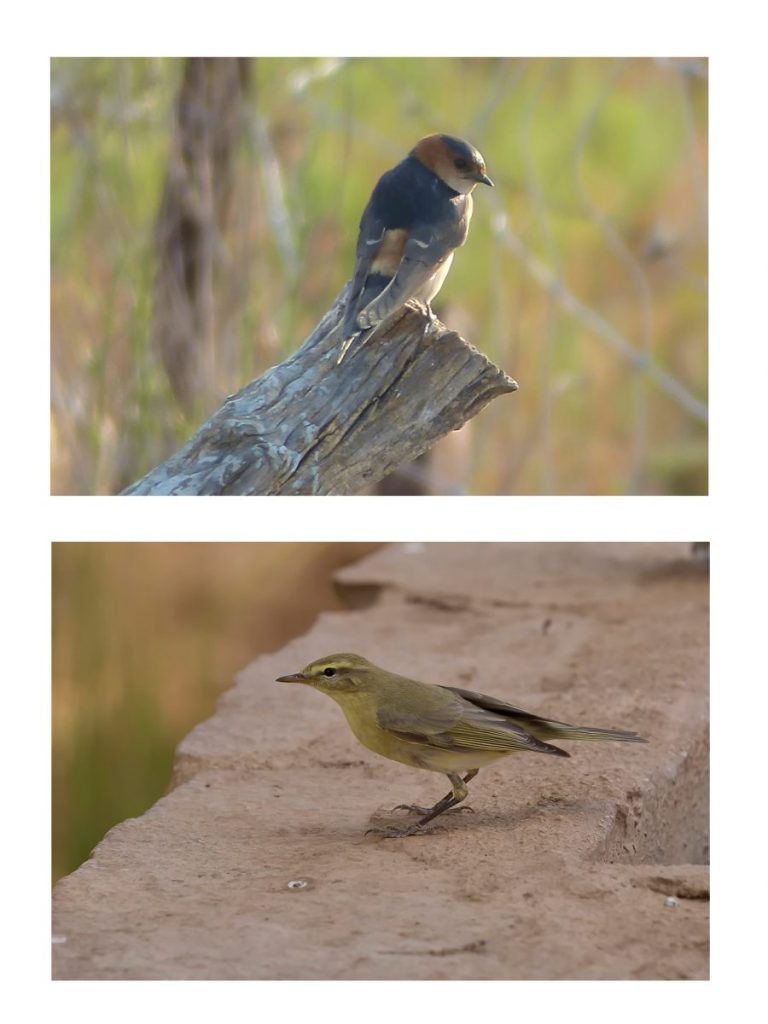
Iberian Chiffchaff © Chris Mills Norfolk Birding
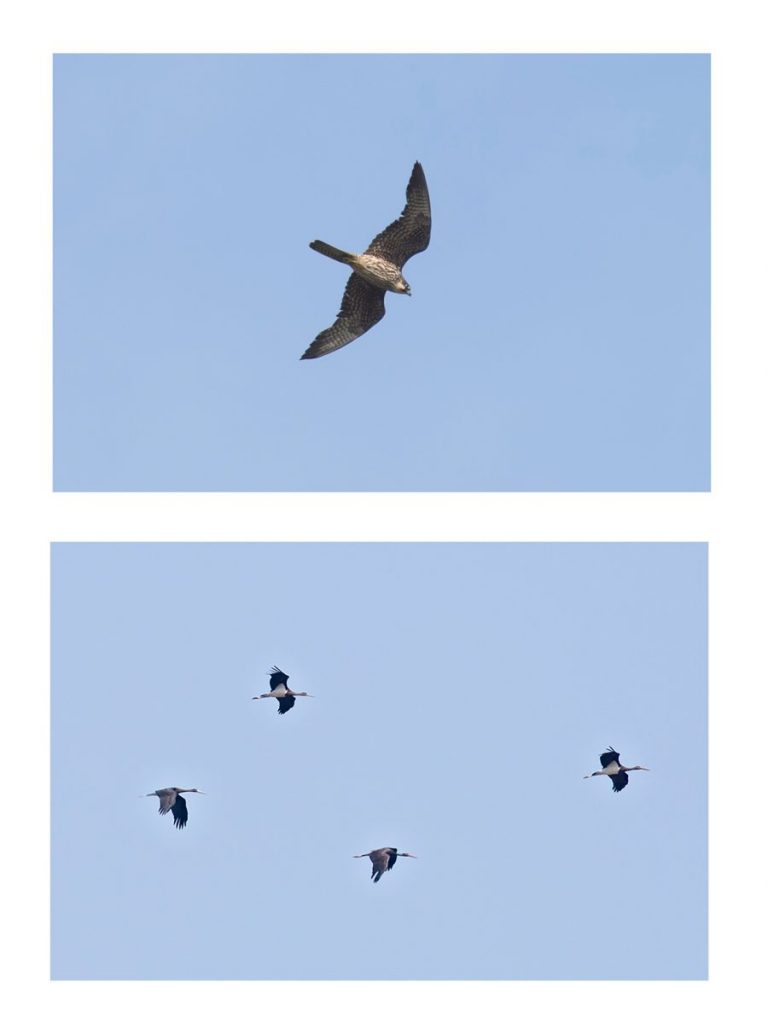
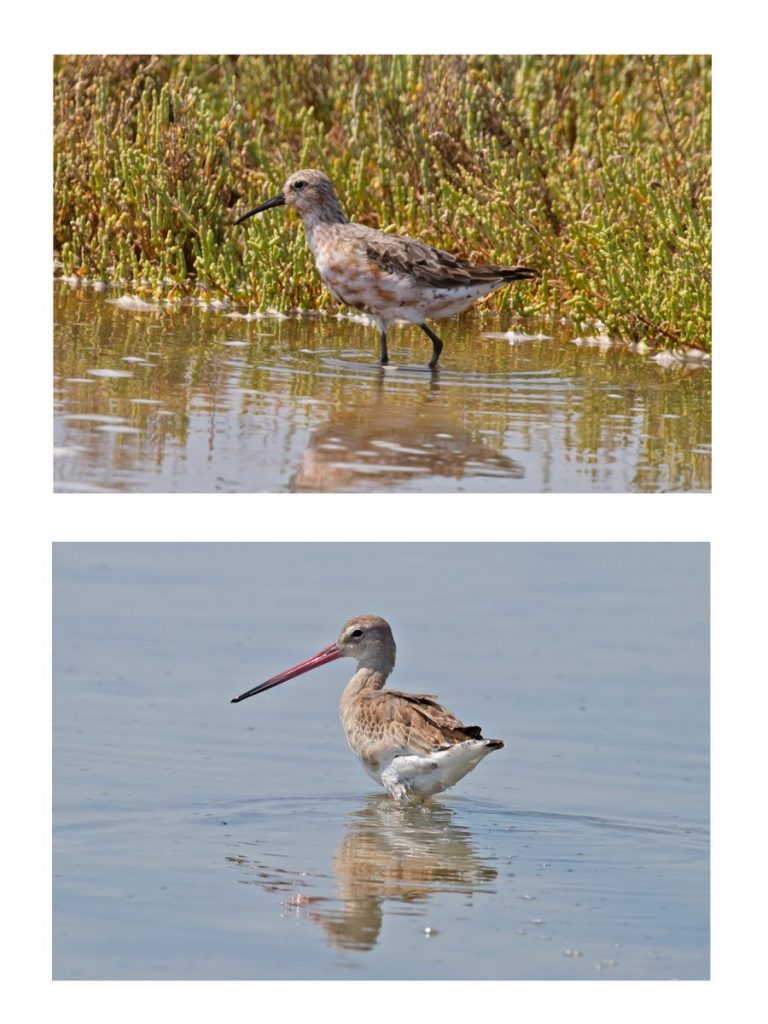
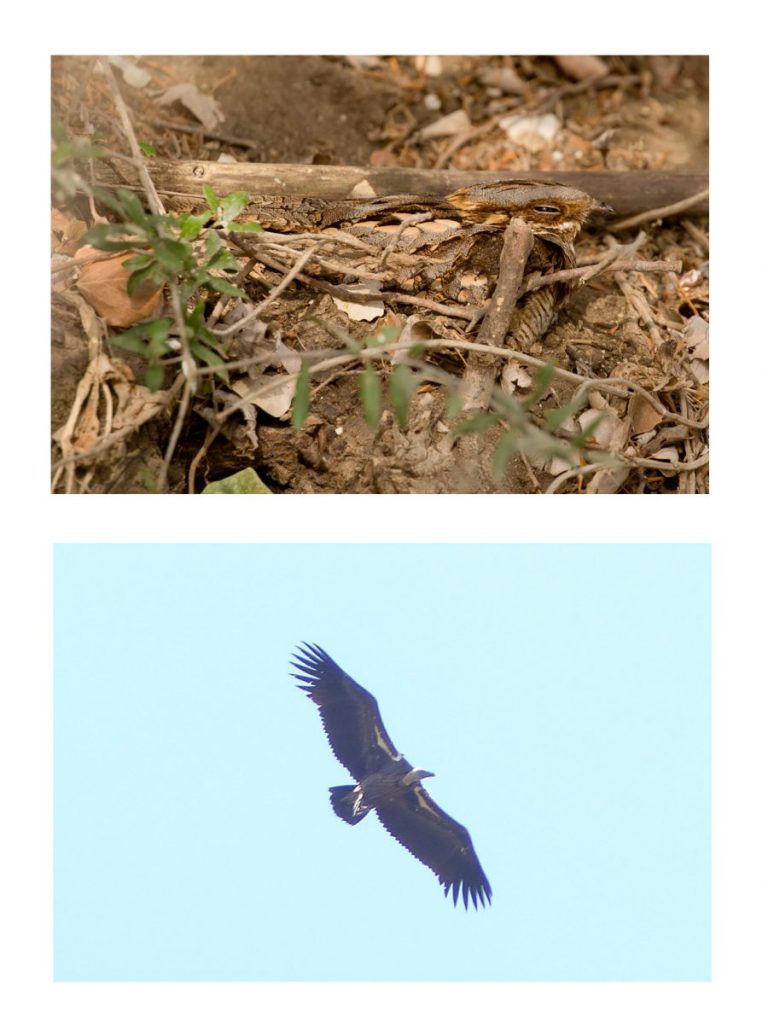
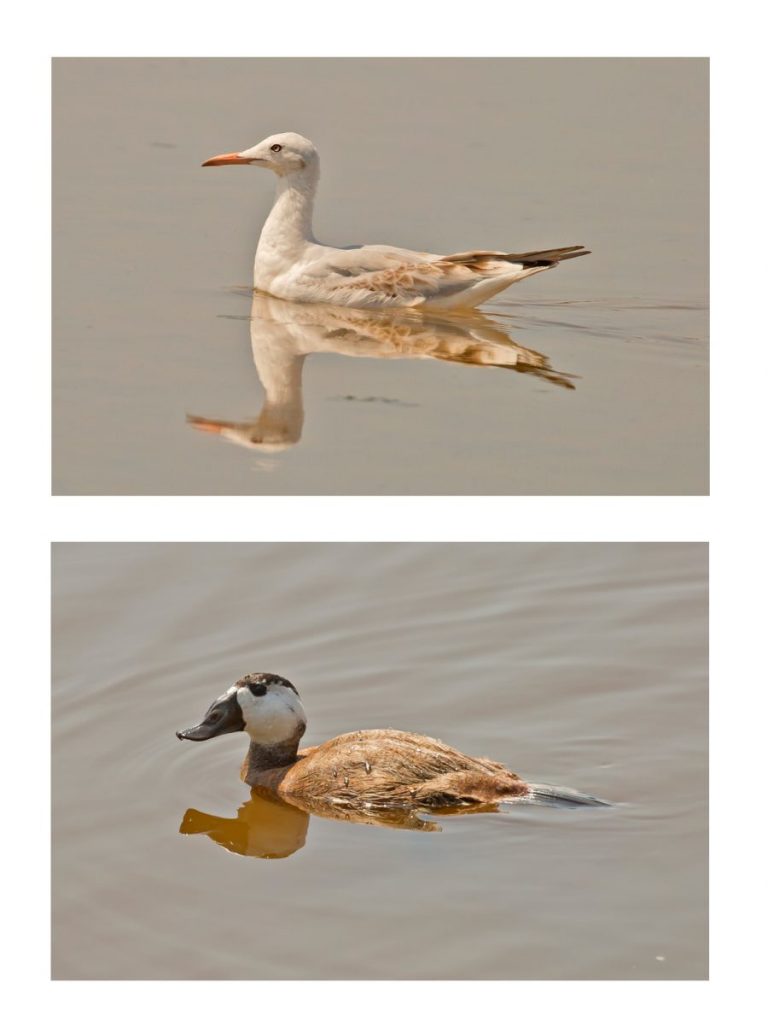
Saturday 7th September 2019 – Day Six – The format for today was different with an evening visit to La Janda planned.
We started the day with a visit to Laguna de Medina. From the first gap in the vegetation there was a mass of wildfowl, plus a nice group of close Greater Flamingos. We started scanning the masses of ducks and were soon adding to our trip list, Great Crested Grebe, Tufted Duck, Common Pochard, Gadwall and Teal were all new. There were at least 4 smart drake Ferruginous Duck, plus there were small numbers again of White-headed Duck and Marbled Duck. The water level was quite low, so there was quite a good number of waders, again lots of c40 Curlew Sandpiper along the shoreline, plus numerous Little and Great Ringed Plover, Common and Green Sandpiper, and 2 showy Snipe just below the hide, plus an impressive flock of 55 Spoonbills.
A group of 4 Black Stork flew over as well as Booted Eagle and a few Griffon Vulture, a Marsh Harrier, Sparrowhawk, a single Short-toed Eagle and 2 Ravens.
Just after midday, we headed back to Tarifa to join Miguel for a lovely traditional Spanish tapas. We had a cracking meal over the next hour, with a lovely variety of tapas dishes arriving one after another! After lunch Miguel and myself headed off to collect the minibus from the parking area, leaving the group in town. Incredibly, we relocated a House Bunting that Miguel had found earlier the same day, it was perched on the top corner of a house, having flown up from feeding on crumbs on the ground, annoyingly we didn’t have our cameras.
We picked the group up and headed out towards La Janda, first exploring some higher rocky ground just to the West of here. There were Crested Larks, 2-3 Tawny Pipits appeared briefly but were annoyingly flighty, Corn Buntings were numerous, and a nice juvenile Woodchat Shrike appeared along the fence line. As we reached the top of the hillside, 2-3 larks were feeding along the roadside, slightly smaller, greyer with clean streaking than the Crested we had seen, these were Thekla Larks.
We next headed to La Janda, within minutes of arriving we were watching both Montagu’s and Marsh Harrier and it wasn’t long before we saw the unusual dark morph form of Montagu’s Harrier hunting alongside the minibus. There were big flocks of Sparrows, including several Spanish Sparrows. Then we located the first Black-winged Kite, initially in flight then perched on an irrigation bar.
Passerines were flitting along the fenceline and we got out to scan through them, several Corn Bunting, several Crested Lark and Zitting Cisticola
Further on there was a small number of Turtle Doves whilst several Marsh & Montagu’s Harriers continued to dance over the fields.
Then with some more careful searching Miguel our Spanish guide, located one of the very sort after birds and we then had stunning views through the scope of the beautifully patterned and wonderfully camouflaged Red-necked Nightjar. Everyone took turns to enjoy this super bird. We then headed on along the field edges, catching nice views of a Hoopoes en-route plus a very close Little Owl and a stunning Common Redstart.
We rounded off a great day with a roost of around 4-5 Montagu’s Harriers, plus much closer views of 3-4 Black-winged Kites.
Overnight Huerta Grande
Sunday 8th September 2019 – Day Seven – The last day dawned with grey skies, and we headed off to the Ramos river valley just West of Tarifa. It was eyes to the skies with a really nice mixture of birds overhead, plus we at last secured better views of several Calandra Larks. We started off with at least 30 Lesser Kestrels, in the air to the West, fortunately 2-3 were hunting closer and occasionally perching on the fence line, including a nice adult male for ease of identification!
Overhead there was a few hundred raptors, with Black Kites dominant, then groups of Honey Buzzards and Booted Eagle, plus good numbers of Short-toed Eagle, the latter scoped close up through the scope. A juvenile Montagu’s Harrier was hunting low along the valley edge, then an Osprey flew down the valley then a nice group of Egyptian Vultures passing and a group of 40 Bee-eater passed over – it was non stop action!
The bushes further up the valley held, both Iberian Grey Shrike and Woodchat Shrike, plus a group of 7 Black Stork passed overhead.
By late morning the wind had gone round for the frist time in the whole week to a Westerly, the strong easterlies we had encountered had prevented us from getting out on a boat trip. So we decided on a bit of sea-watching from Observatorio del Estrecho. We ate our lunch whilst scanning and did rather well, with a Pomarine Skua, a tricky distant Arctic Skua, some obvious Cory’s Shearwaters and around 20 Balearic Shearwaters in 2 groups.
It was now early afternoon and we decided to head towards Algarrobo watchpoint, but as we headed back we ran into a thunderstorm and for the next 2-3 hours we had heavy rain, in fact torrential at times! We headed back to Huerta Grande and waited for it to abate!
Eventually around 430pm it eased and by 5pm, it was warm with the odd spells of sunshine and by 6pm it was clear as a whistle and sunny. We stood on the boardwalk at Huerta Grande, where wave after wave of Honey Buzzards appeared, along with the usual mixture of raptors, it was a grand finale! We knew a lot of birds had passed over to Africa as we could see the birds make an absolute bee-line south out over the sea, well up till 7pm. Incredibly, I spoke with the official counters the next day and they had deployed the counters to the watchpoints recognising what was likely to happen, they had counted 6000 Honey-buzzards from Algarrobo and 4000 Honey-buzzards from Cazalla!
We had our final lovely evening meal at Huerta Grande.
Day Eight – September 12th – After breakfast we loaded up the minibus and dropped everyone to Gibraltar airport at 900am ready for their late morning flight back to the UK.
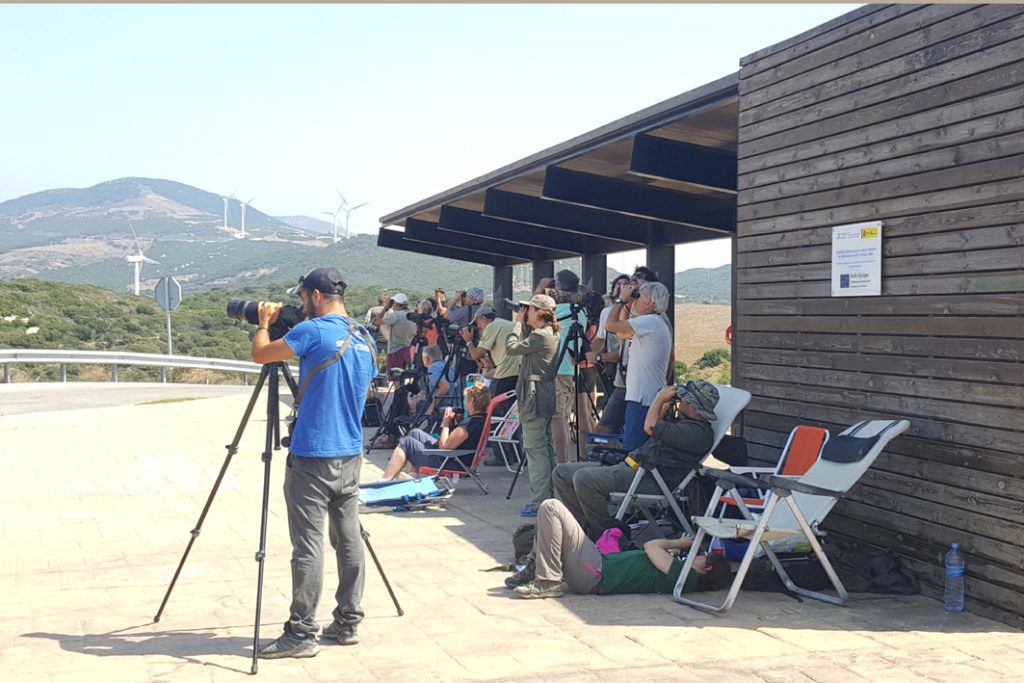
Thanks – I would like to say a special thanks to Katrin at Huerta Grande and Miguel Gonzalez Perea the local guide
Also thanks to the group of clients who joined me, you were a great group and it was a pleasure to share so many great spectacles!
Final Overview & Systematic Bird List – This was another fantastic trip to Andalucia, our 8th year. We recorded a record breaking total of 173 species. Though species numbers are a minor part of the experience, the truly fantastic migration that passes through this region is nothing less than a truly spiritual experience for keen birdwatchers!
| 1 | Little Grebe | 88 | Little Tern |
| 2 | Great Crested Grebe | 89 | Caspian Tern |
| 3 | Black-necked Grebe | 90 | Common Tern |
| 4 | Cory’s Shearwater | 91 | Sandwich Tern |
| 5 | Balearic Shearwater | 92 | Common Woodpigeon |
| 6 | Northern Gannet | 93 | Collared Dove |
| 7 | Great Cormorant | 94 | European Turtle Dove |
| 8 | Grey Heron | 95 | Rock Dove/Feral Pigeon |
| 9 | Purple Heron | 96 | Monk Parakeet |
| 10 | Night Heron | 97 | Little Owl |
| 11 | Great White Egret | 98 | Tawny Owl |
| 12 | Little Egret | 99 | Red-necked Nightjar |
| 13 | Cattle Egret | 100 | Alpine Swift |
| 14 | Black Stork | 101 | Pallid Swift |
| 15 | White Stork | 102 | Common Kingfisher |
| 16 | Greater Flamingo | 103 | European Bee-eater |
| 17 | Mallard | 104 | Hoopoe |
| 18 | Gadwall | 105 | Wryneck |
| 19 | Marbled Teal | 106 | Great Spotted Woodpecker |
| 20 | Eurasian Teal | 107 | Sand Martin |
| 21 | Northern Shoveler | 108 | Barn Swallow |
| 22 | Red-crested Pochard | 109 | Crag-Martin |
| 23 | Common Pochard | 110 | House Martin |
| 24 | Ferruginous Duck | 111 | Red-rumped Swallow |
| 25 | White-headed Duck | 112 | Crested Lark |
| 26 | Egyptian Vulture | 113 | Thekla Lark |
| 27 | Ruppells Griffon | 114 | Calandra Lark |
| 28 | Eurasian Griffon | 115 | Lesser Short-toed Lark |
| 29 | Bonelli’s Eagle | 116 | Short-toed Lark |
| 30 | Booted Eagle | 117 | Wood Lark |
| 31 | Short-toed Eagle | 118 | Tree Pipit |
| 32 | Osprey | 119 | Tawny Pipit |
| 33 | European Honey-buzzard | 120 | Blue-headed wagtail |
| 34 | Black Kite | 121 | Grey Wagtail |
| 35 | Red kite | 122 | Spotted Flycatcher |
| 36 | Marsh Harrier | 123 | Pied Flycatcher |
| 37 | Montagu’s Harrier | 124 | Black Redstart |
| 38 | Black-shouldered Kite | 125 | Common Redstart |
| 39 | Common Buzzard | 126 | Whinchat |
| 40 | Eurasian Sparrowhawk | 127 | Common Stonechat |
| 41 | Lesser Kestrel | 128 | Black Wheatear |
| 42 | Common Kestrel | 129 | Black-eared Wheatear |
| 43 | Peregrine Falcon | 130 | Northern Wheatear |
| 44 | Eleonora’s Falcon | 131 | Robin |
| 45 | Pheasant | 132 | Dunnock |
| 46 | Red-legged Partridge | 133 | Blue Rock Thrush |
| 47 | Water Rail | 134 | Blackbird |
| 48 | Purple Swamphen | 135 | Mistle Thrush |
| 49 | Moorhen | 136 | Zitting Cisticola |
| 50 | Common Coot | 137 | Cetti’s Warbler |
| 51 | Glossy Ibis | 138 | Willow Warbler |
| 52 | Eurasian Spoonbill | 139 | Iberian Chiffchaff |
| 53 | Greylag goose | 140 | Blackcap |
| 54 | Canada Goose | 141 | Garden Warbler |
| 55 | Oystercatcher | 142 | Western Orphean Warbler |
| 56 | Black-winged Stilt | 143 | Common Whitethroat |
| 57 | Avocet | 144 | Dartford Warbler |
| 58 | Great Ringed Plover | 145 | Subalpine Warbler |
| 59 | Little ringed Plover | 146 | Sardinian Warbler |
| 60 | Kentish Plover | 147 | Firecrest |
| 61 | Northern Lapwing | 148 | Long-tailed Tit |
| 62 | Grey Plover | 149 | Coal Tit |
| 63 | Knot | 150 | Crested Tit |
| 64 | Sanderling | 151 | Great Tit |
| 65 | Temminck’s Stint | 152 | Eurasian Blue Tit |
| 66 | Little Stint | 153 | European Nuthatch |
| 67 | Curlew Sandpiper | 154 | Short-toed Treecreeper |
| 68 | Dunlin | 155 | Iberian Grey Shrike |
| 69 | Ruff | 156 | Woodchat Shrike |
| 70 | Snipe | 157 | Golden Oriole |
| 71 | Black-tailed Godwit | 158 | Eurasian Jay |
| 72 | Bar-tailed Godwit | 159 | Eurasian Jackdaw |
| 73 | Whimbrel | 160 | Common Raven |
| 74 | Eurasian Curlew | 161 | Spotless Starling |
| 75 | Common Redshank | 162 | House Sparrow |
| 76 | Greenshank | 163 | Spanish Sparrow |
| 77 | Green Sandpiper | 164 | Chaffinch |
| 78 | Common Sandpiper | 165 | Hawfinch |
| 79 | Wood Sandpiper | 166 | Greenfinch |
| 80 | Ruddy Turnstone | 167 | Goldfinch |
| 81 | Red-necked Phalarope | 168 | Linnet |
| 82 | Arctic Skua | 169 | European Serin |
| 83 | Pomarine Skua | 170 | Common Waxbill |
| 84 | Audouin’s Gull | 171 | Cirl Bunting |
| 85 | Yellow-legged Gull | 172 | Rock Bunting |
| 86 | Black-headed Gull | 173 | Corn Bunting |
| 87 | Slender-billed Gull |
Amazing Migrants Tour 2020 – This tour will run again from Saturday 29th August 2020 to Saturday 5th September.
If you are interested in joining contact us as soon as possible as this is a very popular trip. Visit www.norfolkbirding.com or contact chrismills@norfolkbirding.com mob: 00447876 357677
